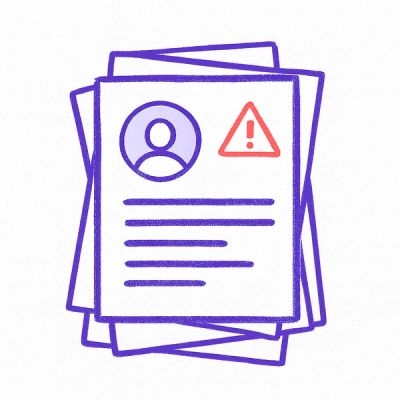
Research
Two Malicious Rust Crates Impersonate Popular Logger to Steal Wallet Keys
Socket uncovers malicious Rust crates impersonating fast_log to steal Solana and Ethereum wallet keys from source code.
Backblaze B2 Encrypt-n-Sync: a command-line application to synchronize a local directory to a B2 bucket
B2 Encrypt-n-Sync
This is a utility that is designed to back up (synchronize) a local directory to a Backblaze B2 bucket, encrypting the files along the way.
The application compares the local directory and the remote bucket, and for each file:
Local files will never be modified. This tool is intended to allow you to backup a local directory to Backblaze B2, not to use B2 as a sort of Dropbox.
B2ENS assumes it has exclusive control over the bucket you configure it to use. If you upload files without using B2ENS, they will be hidden (deleted) the next time B2ENS runs.
Install it from npm by running npm install -g b2ens in an administrator command prompt (on Windows) or as root (on Linux).
Use it by running b2ens <command> on the command line. Available commands:
$ b2ens sync <path to syncfile>
See "Syncfiles" section below
$ b2ens generate-keypair <public key output file path> <private key output file path>
$ b2ens generate-syncfile
Interactively guides you through creating a syncfile
$ b2ens download
Download and decrypt files from the B2 bucket
Options:
--help Show help
--dir Remote directory to download. Omit to download everything
-o, --output Path to output directory on local disk (files will be overwritten) [required]
-s, --syncfile Optional path to syncfile. If provided, you don't need to
separately pass --bucket, --key-id, or --app-key
-b, --bucket name of bucket to download files from
--key-id B2 key ID to use to access your bucket
--app-key B2 application key to use to access your bucket
--private-key Path to PEM-encoded private key used to decrypt files [required]
$ b2ens encrypt-file <path to public or private key> <input file path> [output file path]
$ b2ens decrypt-file <path to private key> <input file path> [output file path]
$ b2ens decrypt-folder <path to private key> <input folder path> <output folder path>
A syncfile is a JSON file containing the configuration for a sync. It should look like this:
{
"local": {
"directory": "/path/to/directory/to/backup",
"exclude": ["/optional/array", "/of/files/or/directories", "/to/exclude"]
},
"remote": {
"bucket": "name-of-bucket",
"prefix": "somefolder/"
},
"keyId": "backblaze key id",
"applicationKey": "backblaze application key",
"encryptionKey": {
"publicKeyPath": "/path/to/pem/encoded/rsa/key",
"publicKey": "-----BEGIN PUBLIC KEY-----\nblahblah\n-----END PUBLIC KEY-----"
}
}
local
directory - The local directory to be backed up to Backblazeexclude - An optional array of files and/or directories to exclude
/var/www/html, then you would set local.directory = /var/www/html/var/www/html/some-dir and /var/www/html/some-file, then you would set local.exclude to ["/var/www/html/some-dir", "/var/www/html/some-file"]!* is interpreted as zero or more characters, excluding slashes** is interpreted as zero or more characters, including slashes/**!/var/www/html/some-dir/** will match all files and subdirectories in /var/www/html/some-dir!/var/www/html/users/*/some-file will match all files by name some-file contained within all directories in /var/www/html/users!/var/www/html/users/*/some-dir/** will match all files and subdirectories in the some-dir directory contained within all directories in /var/www/html/usersremote
bucket - The name of the bucket (not the bucket ID) you want to back up toprefix - If you want your backup root in the remote bucket to be in a folder, put the full path to the folder relative to the bucket root here. No leading slash, trailing slash required. Example: "somefolder/" or "some/folder/". If you omit the trailing slash, then all files will be uploaded to the bucket root, but with this value prefixed to their filenames. For example, a prefix of "foo" will cause a file named "test.txt" to be uploaded as "footest.txt".keyId - The key ID you want to use to authenticate with Backblaze. For security reasons, this should be an application key that can only access your one bucket.applicationKey - The Backblaze application keyuploadThreads - The number of threads to use when uploading large files (default 5). Lower this if you're having network issues.encryptionKey - You only need to specify one of the following
publicKeyPath - The path to a PEM-encoded file contaning an RSA public keypublicKey - A PEM-encoded RSA public keyEach file is encrypted using AES-256-CTR with a per-file key. The symmetric key is RSA-encrypted and stored in the
uploaded file alongside the encrypted data. The final 20 bytes of each uploaded file are a HMAC.
Files under 100 MB are streamed from disk, encrypted as a stream, and uploaded in a single part.
Files larger than 100 MB will be uploaded in chunks at most 50 MB in size.
Please note: Due to the nature of multi-threaded encrypted uploads, each chunk in a large file must be loaded into
memory prior to being uploaded. Therefore, a large-file upload will consume at least uploadThreads × 50 MB. Please
take this into consideration on a device with limited RAM (e.g. a Raspberry Pi).
There is no functionality implemented in B2ENS to download and decrypt files. You will need to download either an
individual file or some number of files and use either decrypt-file or decrypt-folder to decrypt them.
If you wanted to decrypt an entire bucket, you might want to either
create and download a bucket snapshot
or use the B2 command line tool to download your bucket
contents. Once downloaded, you can use the decrypt-folder command to decrypt the entire bucket's contents.
Please note that the decrypt-folder command will delete input files after they are successfully decrypted to the
output folder. This is to prevent it being necessary to have enough free disk space to hold two copies of the files.
Additionally, this makes it apparent if any files were unable to be decrypted, since they will be all that's left in
the input folder after the process completes.
FAQs
Backblaze B2 Encrypt-n-Sync: a command-line application to synchronize a local directory to a B2 bucket
The npm package b2ens receives a total of 0 weekly downloads. As such, b2ens popularity was classified as not popular.
We found that b2ens demonstrated a not healthy version release cadence and project activity because the last version was released a year ago. It has 1 open source maintainer collaborating on the project.
Did you know?

Socket for GitHub automatically highlights issues in each pull request and monitors the health of all your open source dependencies. Discover the contents of your packages and block harmful activity before you install or update your dependencies.

Research
Socket uncovers malicious Rust crates impersonating fast_log to steal Solana and Ethereum wallet keys from source code.

Research
A malicious package uses a QR code as steganography in an innovative technique.

Research
/Security News
Socket identified 80 fake candidates targeting engineering roles, including suspected North Korean operators, exposing the new reality of hiring as a security function.